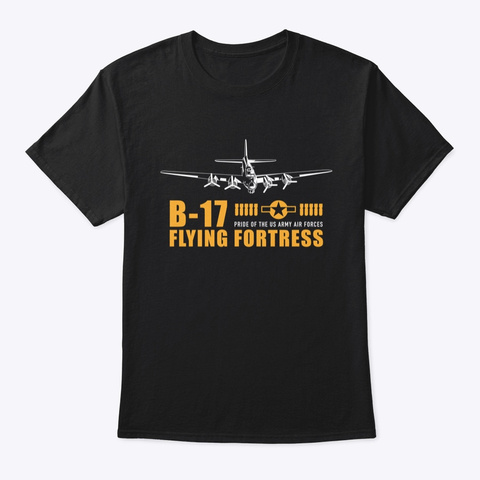B-17 Bomber Flying Fortress – The Queen Of The Skies Other Versions
 English
English Deutsch
Deutsch
During and after the war some B-17 Flying Fortressess were re-equiped or tested for special purposes. Here is a list of the other variants of the B-17.
B-17H (SB-17G)
The B-17H was a specially modified B-17G for use in the air-sea rescue role. Used by Air Rescue Service from 1945 through 1956, the H carried a 27 food long, 3,500 lb lifeboat under the foward fuselage. Because their role often brough them deep into enemy territory in search of downed airmen, the B-17H innitially retained full arment with the exception of the ball turret. With the close of World War Tweo, armament was grandually done away with. The chin turret was the first to go when Army Air Force decided to add search radar to the aircraft. The radar was mounted in a radoome very similar to the BTO radar found on B-17Gs, with the radome replacing the chin turret. The other weappons were eventually deleted to decrease weight and incease the aircraft’s effective range. Later designated as SB-17.
B-40
The XB/YB-40 was an attempt by Army Air Force and Boeing to bring additional defensive firepower to the bomber formations flying against German Luftwaffe fighters. A standard B-17F was modified with an additional Bendix upper turret mounted in place of the radio compartment guns. Additionally, a twin gun chin turret was mounted and the single waist guns were replaced by twin gun mounts. Both the waist guns and the twin tail guns were hydraulycally boosted for better control. Ammunition supplies on the YB-40 were almost trible that of a standard B-17F, 11,275 rounds compared to 3900 rounds on a B-17F. The YB-40s retained full bombing capabilities although seldom used due to the extrem weight of the extra ammunition load.
Although the XB-40 prototype was a Boeing project, all productions YB-40s were built by Douglas but identified as Vega-built aircraft! Twenty-three aircraft were built – one XB-40 and twenty-two YB-40s. They were rushed into combat during May of 1943 with the 92nd Bomb Group at Alconbury. Their career come to a quick end when it was discovered that the much heavier YB-40s could not keep pace with the main bomber stream. By August of 1943 all of the YB-40s had been withdrawn from combat. Some of the YB-40 concepts would live on late B-17F variants, the most notable being the chin turret armament found on late B-17Fs and nearly all of the B-17Gs.
QB-17
Radio-controlled flight bomb (project “Aphrodite”), the two-headed crew bailed out after they had taken the strap to line. But this project was ended because of the inaccuracy.

CB-17G und VB-17G
The VB-17G was a B-17G, stripped of all armor and armament, and rifitted with very plush interiors, including full office and sleeping quarters. They were used by high ranking officers of all the major services. Many VB-17Gs saw services in Korea, whrer they were re-armed with the top turret and tail guns. VB-17s operated throughout the 1950s in this role and were some of the last Flying Fortresses to be retired.
DB-17P
Controller aircraft for the QB-17 drones.
F-9
Reconnaissance B-17s. It was an RB-17G that flew the first mission of the Kerean War on 25 June 1950, when a photo-maping mission of North Kerea was flown by a 6024th Photo Mapping Flight RB-17G.
JB-17G (Model 299Z)
Two B-17G (s/n 44-85813), which was test for the engine type of Curtiss-Wright R-3350 in the nose.
Model 299AB
After the model Z. the alphabet was over for the serial-airplanes and the used double letters. Model AB was a buisness aircraft for Trans World Airlines. They used this model for the opening their ways to Middle East.
PB-1
Name of a B-17F and B-17G, which was used by the US-Navy for different kind of tests.
PB-1G
Air- and Sea-Rescue variant of the US Coast Guard, similar like the B-17H of the USAAF.
PB-1W
The PB-1W was a Navy variant of the B-17G used for long range anti-submarine patrol. Most of the PB-1Ws had APS-20 search radar mounted in a large bubble under the nose. However, some aircraft had the bubble mounted atop the fuselage, which became standard on later airborn early warning and antisubmarine aircraft such as the Lookheed EC-121.
QB-17L und QB-17N
The QB-17 was a remote piloted drone aircraft initially used in the Bikini atomic bomb testes to check the effects of the nuclear blast on aircraft’s flying characteristics and equipment. Later, in the 1950s, QB-17s were used as targets for Air Defense Command gunnery meets, and in the testing of a new generation of air to air missiles such as the Sidewinder. QB-17s were some of the most colorful aircraft in the Air Force, painted in Yellow with Black stripes, which sometimes covered the entire aircraft. Controller aircraft for the QB-17 drones were designated DB-17.
TB-17G
The TB-17 was a trainer version of any B-17 variant.
XB-38
An aircraft which was equipped with Allison-V 710-89 in-line engines as a trial.
XC-108
Retrofitting to a transport plane for 38 persons
XC-108A
Freighter with freight door on the left fuselage side
XC-108B
Experimental air tanker
YC-108
VIP transport plane
The history and variants of the B-17 would remain incomplete if one embezzled her exciting secret uses under the I./KG 200 of the German Luftwaffe. The B-17 were the most important spoils pattern of this group with which she carried out numerous long range missions under the assumed name Dornier Do 200, mostly in the G version. These machines operated in risky missions over all of Europe of Norway via Jordan up to the desert in the west of North Africa. The Germans aimed thus not at all primarily at a deception of the Allies but these machines were simply for the respective purpose suited better than every other German planes!





